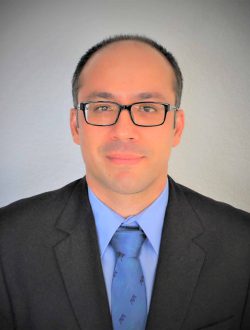Clear Skies and High Efficiency! Ramon A. Beltran
Biography
Ramon A. Beltran received his M.Sc. and PhD degrees from CICESE Research Center, Ensenada, Mexico, in 205 and 2009 respectively.
He joined Lark Engineering as a RF and Microwave Engineer in 2010 where he developed RF and Microwave filters in different technologies. In late 2010 he joined RFMD (now Qorvo) design center in Cedar Rapids, Iowa and he was responsible for cellular handset power amplifier design. From 2012 to 2016, Dr. Beltran worked for Skyworks Solutions, Inc., in Thousand Oaks, CA., as a Principal Design Engineer. In the summer of 2016 to 2018 he was a Qualcomm Technologies Sr. Staff Engineer, in San Diego, CA., where he led the design of HBT power amplifiers for FEM.
He is currently a Principal Staff Engineer with Ophir RF Inc., in Los Angeles CA., involved in research and development activities related to high-power amplifiers.
Dr. Beltran holds eight US Patents and has been a regular International Microwave Symposium presenter in the HF/UHF and VHF Technologies session.
Presentations
Network Transforms and Practical Issues for High Efficiency Power Amplifiers and Transmitters
When RF power amplifier are employed, high efficiency operation is desired to reduce heat dissipation and heat sink requirements as well as a more reliable operation, reduced power consumption, cost reduction, etc. High efficiency amplifier classes such as class-E requires specific impedances at the device drain or collector at the fundamental-frequency and the harmonics in order to achieve optimum efficiency just at peak power. Often, the class-E loading network synthesis yields unpractical component values, a fixed topology and requires matching to 50-Ohms. In this talk, a technique related to lumped-element network design and transformation will be presented in order to manage practical issues, select a specific topology for a given application and realize matching to 50-Ohms with a minimum number of components of standard values. Additionally, the class-E amplifier application to broadband outphasing transmitters will be presented and the benefits of efficiency enhancement at output powers other than peak power are shown over a wide frequency range.
